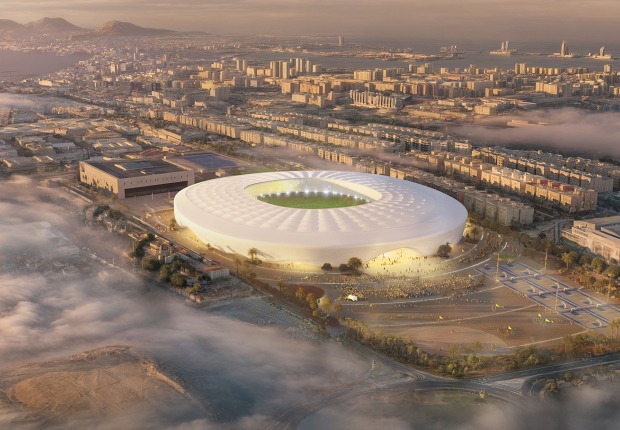
The project by José Rodríguez and Carlos Montes for TAC! confronts the vernacular values of the traditional salt mountains and the natural resources used over the years in the region with new innovative and sustainable approaches, promoting dialogue between the two and highlighting the importance and positive impact of traditional ways of life, focusing on the social and climatic issues involved.
The ephemeral pavilion, made up of three essential elements for the local imagination: salt, wood and steel, brings to interested citizens until October 14 a way of construction and assembly that combines innovation and traditional construction processes, through its morphology and materiality, resulting in an example of the importance and need to seek alternatives to industrial construction processes.

La Sal, pavilion TAC! 2024 by José Rodríguez and Carlos Montes. Photograph by del Río Bani.
The Plaza del Rey in San Fernando, Cádiz, is hosting the temporary La Sal pavilion until October 14. The winning project of the ideas competition for the third edition of TAC! Urban Architecture Festival, an event promoted by the Ministry of Housing and Urban Agenda (MIVAU) with the collaboration of the Arquia Foundation, has on this occasion the support of the San Fernando City Council and the Cadiz Provincial Council.
Based on the conception of architecture as a tool for social transformation of public space, the pavilion, by architects José Rodríguez and Carlos Montes, proposes to activate the potential of the most abundant and sustainable natural resources in the province of Cádiz. Emulating the traditional mountains of salt, the project reflects on the regeneration of urban space in a dialogue between the environment and its resources, the historical and cultural heritage with the citizens and the vernacular values with innovation and sustainability.

Identity, sustainability and innovation
From the central location of the La Sal pavilion, the project emerges outwards to establish a dialogue with the environment – the coastline of the city of Cadiz and the salt industry – and its resources; claiming from architecture the vernacular values of traditional and highly sustainable ways of life, and making social and climatic issues transversal.
In this way, La Sal is based on three materials with strong roots in the local area: together with salt as the main element, wood and steel shape the temporary pavilion, in a construction and assembly process that combines innovation and traditional processes, and which is based on the need to find sustainable alternatives to industrial construction materials.






































